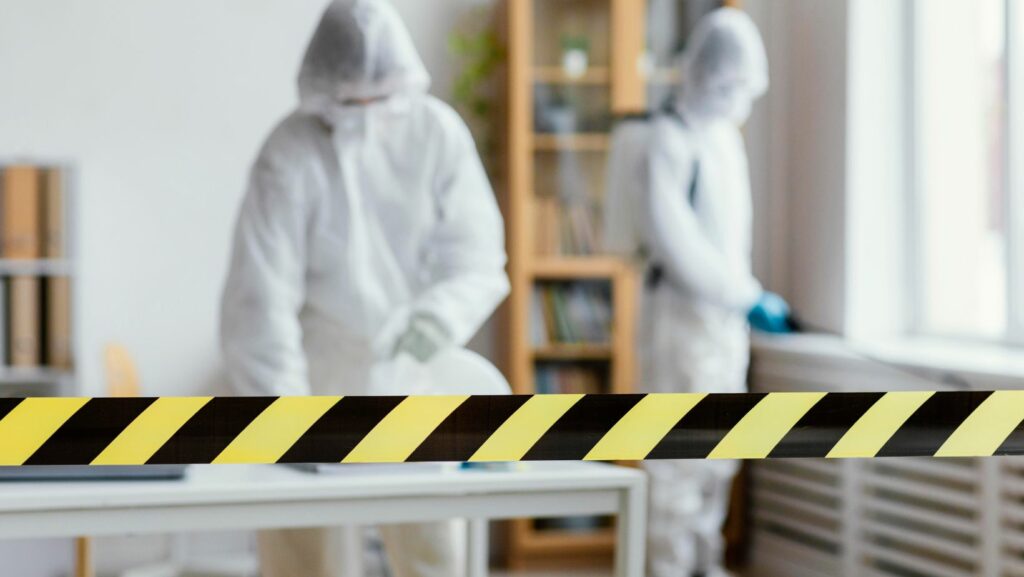Biohazard situations in homes can be daunting and potentially dangerous to handle. Whether it’s due to trauma, crime, unattended death, hoarding, causes of biohazard at home, or infectious diseases, a biohazardous environment requires thorough cleaning and restoration to ensure safety and prevent health risks. Understanding the causes and risks associated with biohazards is essential before embarking on the cleaning process.
Causes of Biohazard at Home
Biohazards can emerge from various situations within a home. Trauma, such as accidents or violent incidents, can leave behind blood, bodily fluids, and other potentially infectious materials. Similarly, unattended deaths, where a person passes away without immediate discovery, can result in decomposition fluids seeping into surfaces and materials. Hoarding, a disorder characterized by excessive accumulation of items and neglect of cleanliness, can lead to biohazards due to mold, pests, and unsanitary conditions. Additionally, infectious diseases, whether from human or animal sources, can pose serious health risks if not properly contained and cleaned.
Dealing with a biohazard situation requires a delicate approach that prioritizes safety, thoroughness, and sensitivity to the emotional aspects involved. Here’s a comprehensive guide on how to clean and restore a biohazard house safely:
Assess the Situation
Before beginning the cleaning or restoration process, it’s crucial to evaluate the scope of biohazard contamination. This involves identifying the affected areas and determining the specific type of biohazard involved, such as blood, bodily fluids, pathogens, mold, or hazardous chemicals. Additionally, wearing proper personal protective equipment (PPE), including gloves, masks, goggles, and protective clothing, is essential to reduce exposure to potentially harmful substances during cleanup. This precautionary measure helps ensure the safety of those involved in handling biohazardous materials.
Develop a Cleanup Plan
Based on the assessment, develop a detailed cleanup plan that outlines the necessary steps, equipment, and cleaning agents required for the task. Consider factors such as the type of surfaces affected, the severity of contamination, and any specific regulations or guidelines that must be followed.
If the biohazard situation is extensive or poses significant risks, consider hiring professional biohazard cleanup services with the expertise and resources to handle the situation safely and effectively.
Gather Supplies and Equipment
Gather all the necessary supplies and equipment before starting the cleanup process. This may include biohazard bags, absorbent materials, disinfectants, cleaning agents, mops, brushes, and disposable wipes. Ensure that all equipment is in good working condition and properly sanitized before and after use to prevent cross-contamination.
Contain and Remove Contaminated Materials
Contain the biohazardous materials to prevent further spread of contamination. Use biohazard bags or containers to safely dispose of items such as clothing, bedding, furniture, and other porous materials that cannot be effectively cleaned and sanitized. Seal the bags securely and label them appropriately to alert others of the potential hazards.
Clean and Disinfect Surfaces
Thoroughly clean and disinfect all affected surfaces using appropriate cleaning agents and disinfectants. Follow the manufacturer’s instructions for dilution, application, and contact time to ensure effective disinfection. Pay special attention to high-touch surfaces such as doorknobs, countertops, light switches, and fixtures. Use disposable wipes or paper towels to avoid cross-contamination, and discard them properly after use.
Deodorize and Air Out the Space
Biohazard situations often come with unpleasant odors due to decomposition, mold, or chemical residues. After cleaning and disinfecting the area, deodorize the space using odor-neutralizing products or air purifiers to eliminate lingering smells. Open windows and doors to ventilate the area and promote air circulation, which can help remove airborne contaminants and improve indoor air quality.
Restore and Repair Damaged Areas
Once the cleanup process is complete, assess any structural damage or cosmetic issues caused by the biohazard situation. Repair or replace damaged materials such as flooring, drywall, insulation, and fixtures to restore the home to its pre-accident condition. Consider consulting with professionals such as contractors, plumbers, or electricians for any specialized repairs or renovations needed.
Seek Professional Help if Needed
If the biohazard situation is too overwhelming or poses significant health risks, don’t hesitate to seek professional help.

Professional biohazard cleanup companies have the expertise, experience, and specialized equipment to handle even the most challenging situations safely and efficiently. They can also provide valuable support and guidance throughout the cleanup and restoration process, alleviating the burden on homeowners and ensuring thorough and compliant cleanup.
Final Thoughts
Cleaning and restoring a biohazard house safely requires careful planning, appropriate precautions, and thorough execution. By following the steps outlined above and prioritizing safety and thoroughness, homeowners can effectively mitigate risks, restore their homes, and regain peace of mind. Keep in mind the importance of addressing biohazard situations with empathy and understanding, acknowledging the emotional impact they may have on individuals and families. With proper care and attention, even the most challenging biohazard situations can be addressed and resolved, allowing homeowners to move forward with confidence and resilience.



More Stories
The Overlooked Gadget That Can Transform Your Home Wi-Fi Performance
Suhjvfu: An In-Depth Exploration
621628759: Discovering Its Hidden Significance